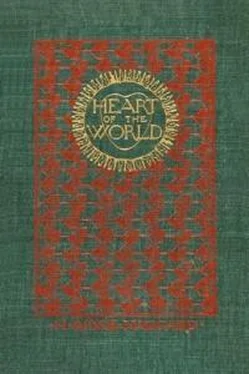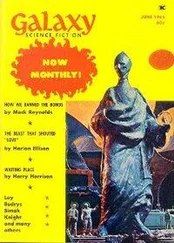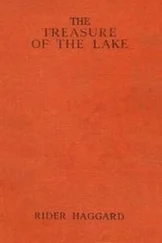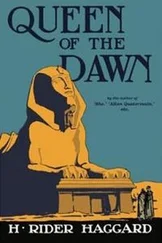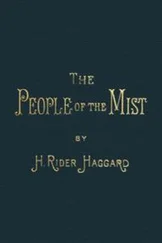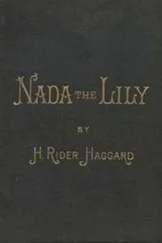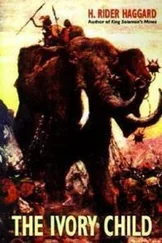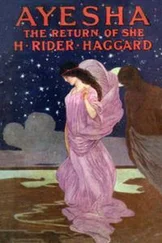Heart of the World
H. Rider Haggard
I inscribe this story of the Golden City
"Heart of the World"
to my namesake and godchild
Henry Rider Haggard
of Butler, U.S.A.Ditchingham,Christmas Day, 1894.
The circumstances under which the following pages come to be printed are somewhat curious and worthy of record. Within the last few years a certain English gentleman, whom we will call Jones, because it was not his name, chanced to be employed as the manager of a mine not far from the Usumacinto River, the upper reaches of which divide the Mexican State of Chiapas from the Republic of Guatemala.
Now life at a mine in Chiapas, though doubtless it has some compensations, does not altogether fulfil a European's ideal of happiness. To begin with, the work is hard, desperately hard, and though the climate is healthy enough among the mountains, there are valleys where men may die of fever. Of sport, strictly speaking, there is none, for the forests are too dense to hunt in with any comfort, and, if they were not, the swarms of venomous insects of various degree, that haunt them, would make this particular relaxation impossible.
Society also, as we understand it, is conspicuous by its absence, and should a man chance even to be married, he could not well bring his wife into regions that are still very unsettled, across forest paths, through rivers, and along the brinks of precipices, dangerous and impassable enough to strike terror to the heart of the stoutest traveller.
When Mr. Jones had dwelt for a year at the mines of La Concepcion, the fact of his loneliness, and a desire for acquaintances more congenial than the American clerk of the stores and his Indian labourers, came home to him with some force. During the first months of his residence he had attempted to make friends with the owners of some neighbouring fincas or farms. This attempt, however, he soon gave up in disgust, for these men proved to be half–breeds of the lowest class, living in an atmosphere of monotonous vice.
In this emergency, being a person of intelligence, Jones fell back upon intellectual resources, and devoted himself, so far as his time would allow, to the collection of antiquities, and to the study of such of the numerous ruins of pre–Aztec cities and temples as lay within his reach. The longer he pursued these researches, the more did they fascinate his imagination. Therefore, when he chanced to hear that, on the farther side of the mountain, at a hacienda called Santa Cruz, there dwelt an Indian, Don Ignatio by name, the owner of the hacienda , who was reported to have more knowledge of the antiguos , their history and relics, than anybody else in this part of Mexico, he determined to visit him upon the first opportunity.
This, indeed, he would have done before, for Don Ignatio boasted an excellent reputation, had it not been for the length of the journey to his home. Now, however, the difficulty was lessened by an Indian who offered to point out a practicable path over the mountain, which brought the hacienda of Santa Cruz to within a three–hours' ride on mule–back from La Concepcion, in place of the ten hours that were necessary to reach it by the more frequented road. Accordingly, one day in the dry season, when work was slack at the mine, owing to the water having fallen too low to turn the crushing–mill, Jones started. This was on a Saturday, for on the Monday previous he had despatched a runner to Don Ignatio announcing his intended visit, and received in reply a most courteous and well–written letter, begging him to pass the next Sunday at the hacienda , "where any English gentleman would always be most welcome."
As he approached the hacienda , he was astonished to see the façade of an enormous white stone building of a semi–Moorish style of architecture, having towers and ornamented doorways at either end, and a large dome rising from the centre of its flat roof. Riding through the milpas , or corn–fields, and groves of cocoa and coffee bushes, all in a perfect state of cultivation, which covered many acres on every side of the building, Jones came to the gateway of a large patio , or courtyard, where grew several gigantic ceiba trees, throwing their grateful shade over the mouth of a well. From under these trees an Indian appeared, who evidently had been watching for his arrival, and, taking the horse, informed him, with many salutations, that the Señor Ignatio was at even–song with his people in the chapel yonder, according to his habit, but that the prayers would soon be finished.
Leaving his horse in charge of the Indian, Jones went to the chapel, and, its great doors being open, he entered and sat down. So soon as his eyes became accustomed to the dim light, he perceived that the place was unusually beautiful, both in its proportions and its decorations.
The worshippers also were many—perhaps they numbered three hundred, clearly all of them Indians employed upon the estate; and so intent were they upon their devotions that his entry was not even noticed. To his mind, however, the most curious object in the building was a slab of white marble, let into the wall above the altar, whereon the following inscription was engraved in Spanish, in letters so large that he had no difficulty in reading it:
"Dedicated by Ignatio, the Indian, to the memory of his most beloved friend, James Strickland, an English gentleman, and Maya, Princess of the Heart, his wife, whom first he met upon this spot. Pray for their souls, of your charity, O passer–by."
While Jones was wondering who this James Strickland, and Maya, Princess of the Heart, might be, and whether it was his host who had set up the tablet to their memory, the priest pronounced his benediction, and the congregation began to leave the church.
The first to pass its doors was an Indian gentleman, whom Jones rightly took to be Don Ignatio himself. He was a man of about sixty years, but one who looked much older than his age, for sorrow, hardship, and suffering had left their marks upon him. In person he was tall and spare, nor did a slight lameness detract from the dignity of his bearing. His dress was very simple and quite innocent of the finery and silver buttons which have so much attraction for the Mexican mind, consisting as it did of a sombrero of Panama straw, with a black ribbon in place of the usual gilt cord, a clean white jacket and shirt, a black tie fastened in a bow, a pair of drab–coloured trousers, and brown boots of European make.
Indeed, the only really remarkable thing about Don Ignatio was his face. Never, thought Jones, had he beheld so beautiful a countenance, or, to be more accurate, one that gave him such assurance of its owner's absolute goodness and purity of nature. The features were those of a high–bred Indian, thin and delicately cut; the nose aquiline, the cheek–bones and brow prominent, while beneath the latter shone a pair of large and soft black eyes, so tender and trustful in their expression that they seemed almost out of place in the face of a man.
He stood by the door of the chapel, in the light of the setting sun, leaning somewhat heavily on a stick, while the Indians filed past him. Every one of these, man, woman, and child, saluted him with the utmost reverence as they went, some of them, especially the children, kissing his long and finely–shaped hand when they bade him good–night in terms of affection, such as "father," and called on the Saints to guard him. Jones, watching them, reflected upon the difference of their attitude from that of the crouching servility which centuries of oppression have induced in their race towards any master of white blood, and wondered to what his host's influence over them was due. It was at this moment that Don Ignatio turned and saw him.
Читать дальше
